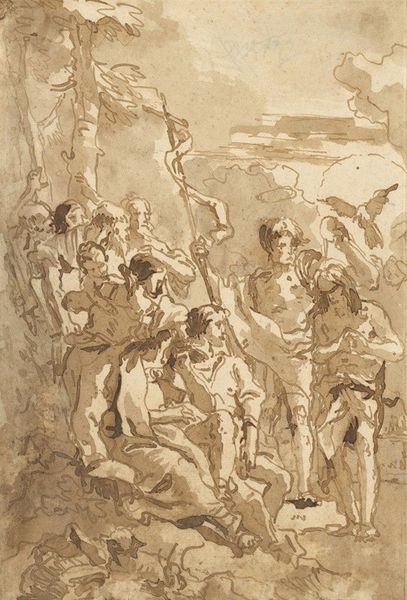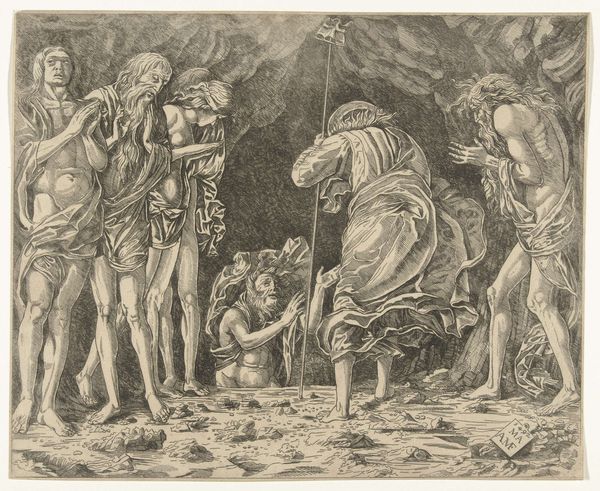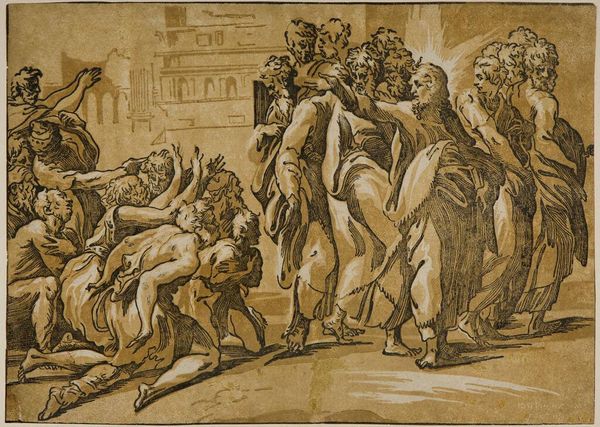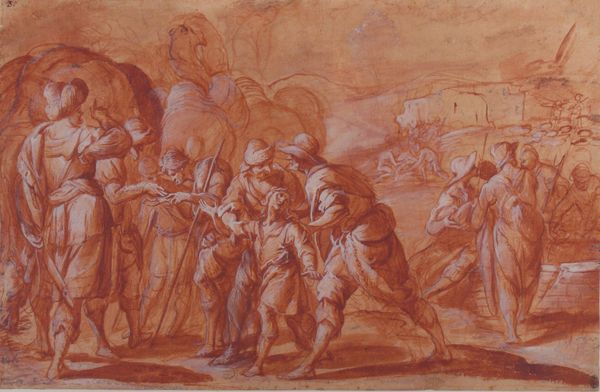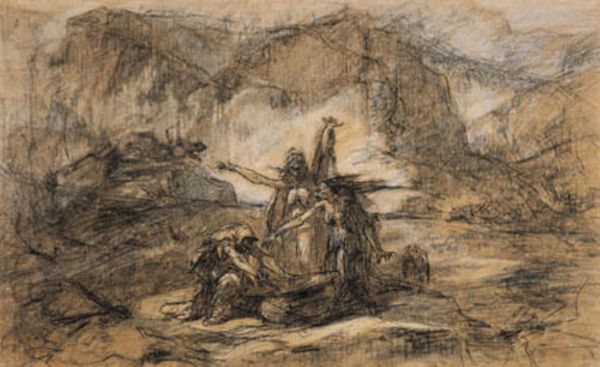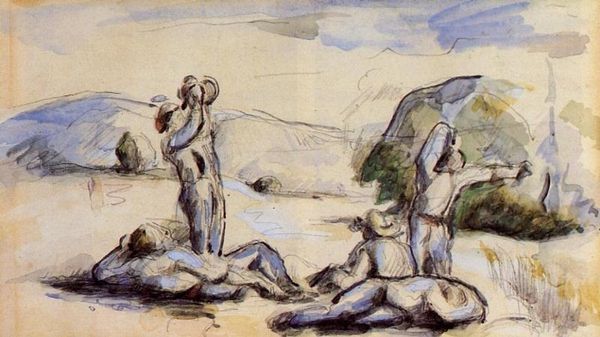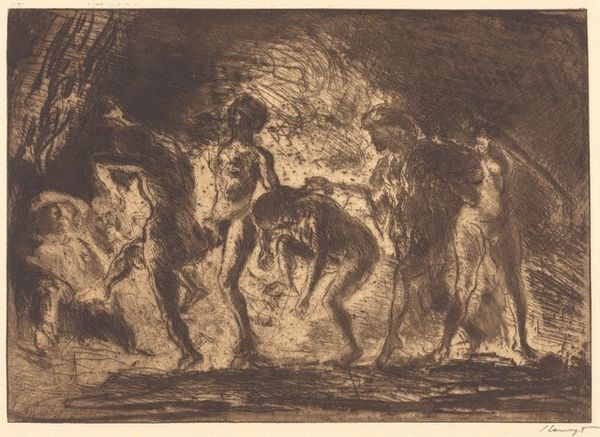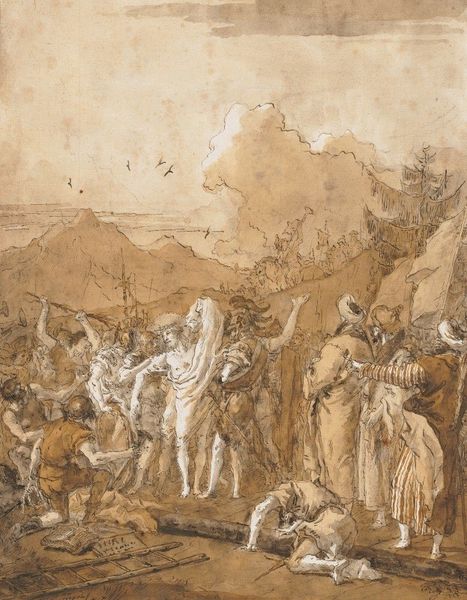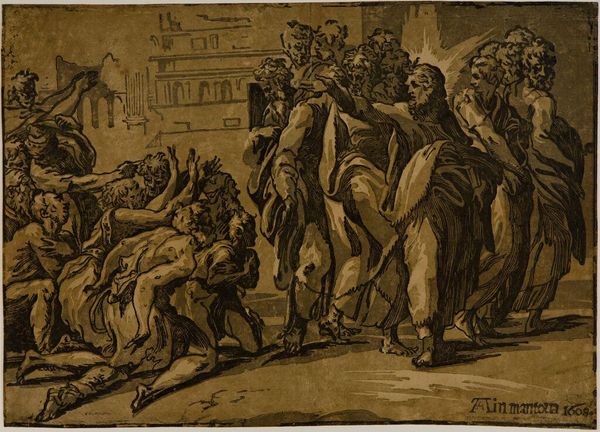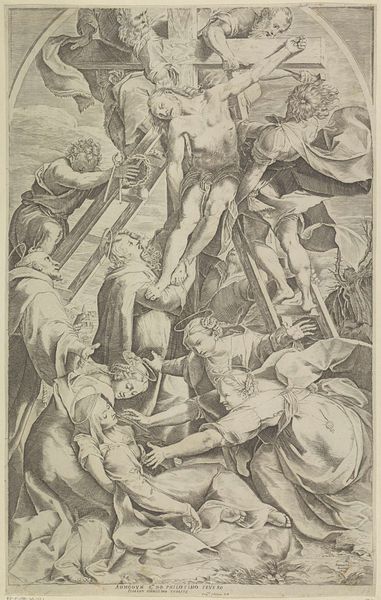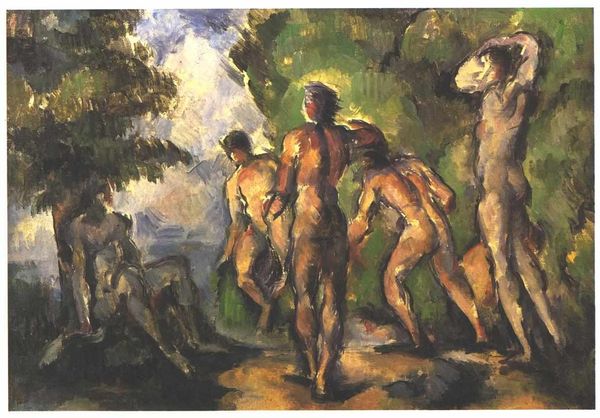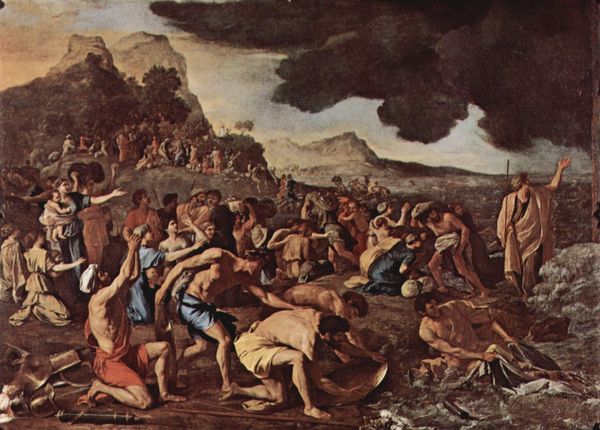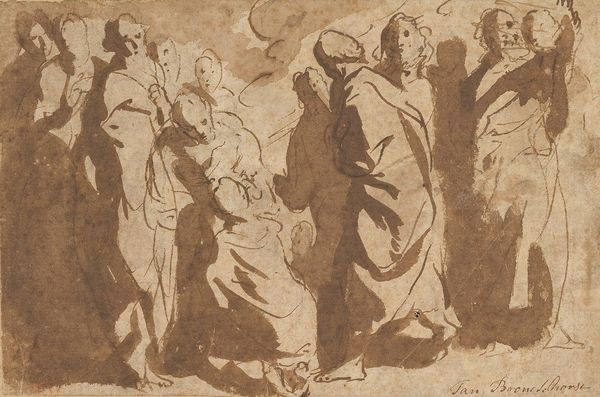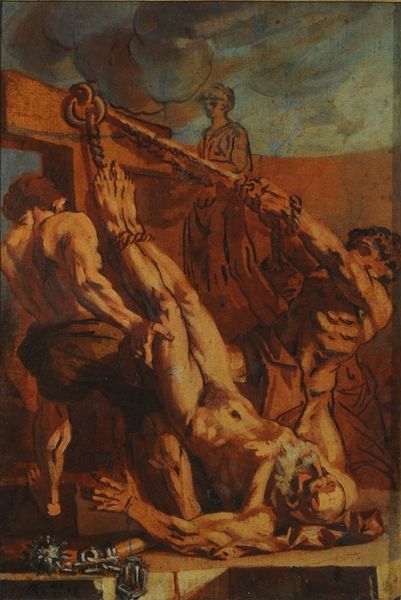
The murderers carry the body of Fualdes 1818
0:00
0:00
theodoregericault
Musée des Beaux-Arts de Rouen, Rouen, France
drawing, ink, charcoal
#
drawing
#
narrative-art
#
charcoal drawing
#
figuration
#
charcoal art
#
oil painting
#
ink
#
group-portraits
#
romanticism
#
charcoal
#
history-painting
#
charcoal
Dimensions: 21.5 x 28.7 cm
Copyright: Public domain
Curator: I’m struck by the density of this charcoal drawing. The compressed figures practically emerge from the murky background. Editor: This is Théodore Géricault's, "The murderers carry the body of Fualdes," created around 1818. It depicts a grim historical event. It is currently held at the Musée des Beaux-Arts de Rouen. Curator: The application of charcoal creates such drama! Notice the sharp contrasts – the almost bleached white of the body against the smudged, intense darkness enveloping the figures. The physical act of rubbing the charcoal seems viscerally connected to the violent act depicted. The tangible remains mirror a tragic event through sheer materiality. Editor: Absolutely. Géricault wasn't just creating a depiction; he was actively participating in a cultural and political narrative. The murder of Fualdès was a sensational scandal. The artist leverages this through his drawing by producing it when the clamor was the loudest to be consumed for years and even decades to come. His work served a public role. It served a morbid fascination for an event with many political intrigues. Curator: I agree. And the medium itself enhances this sense of morbid intrigue. Imagine the availability of materials and Géricault's choice to wield them so effectively in translating a scandal through charcoal, a comparatively "base" material instead of refined oil paints, perhaps reflecting the grittiness of the crime itself and challenging social hierarchies associated with materials in art production. Editor: True. The scandal provided endless interpretive narratives. We can note here how images help frame our collective memory of events. Géricault clearly understands the power dynamics at play. By choosing this subject, he puts himself in the midst of a complex and contested social moment, actively molding his art in order to feed political narratives of the time. Curator: Looking at the process involved really opens up my appreciation for this work, especially how the choice of the materiality of drawing materials accentuates its impact. Editor: Precisely, understanding the work’s historical context and socio-political motivations reveals why it is remembered today and its historical significance.
Comments
No comments
Be the first to comment and join the conversation on the ultimate creative platform.
